Whether you’re a seasoned climber or just starting out, one of the most crucial decisions you’ll need to make is choosing between leather and synthetic climbing shoes. Both types of climbing shoes have their pros and cons, and understanding the differences between them can help you make an informed decision that suits your climbing style and preferences. Leather climbing shoes have been a popular choice among climbers for many years, and for good reason. The natural material used in leather shoes has a reputation for molding to the shape of your foot over time, providing a comfortable and personalized fit. This means that leather shoes tend to offer better overall performance and comfort once they have been broken in. In addition to the superior fit, leather climbing shoes are also known for their durability. High-quality leather shoes can withstand the wear and tear of regular climbing activities, making them a long-lasting investment for climbers who frequent the rocks. The rugged nature of leather shoes also provides excellent protection for your feet, especially in outdoor climbing environments where sharp rocks and rough surfaces are common. On the other hand, synthetic climbing shoes have gained popularity in recent years due to their lightweight construction and quick break-in period. Synthetic materials, such as nylon and polyester, are often used in these shoes to offer a more consistent fit right out of the box. This means that synthetic shoes may be a more comfortable option for climbers who prefer minimal break-in time and immediate performance. Another advantage of synthetic climbing shoes is their breathability. The materials used in synthetic shoes are often more breathable than leather, which can help reduce moisture buildup and keep your feet dry and comfortable during extended climbing sessions. This feature can be particularly beneficial for climbers who tend to sweat heavily or climb in hot and humid conditions. When it comes to performance, both leather and synthetic climbing shoes have their strengths. Leather shoes are known for their precision and edging capabilities, making them a popular choice for climbers who focus on technical climbing routes that require precise footwork. The ability of leather shoes to mold to the shape of your foot also contributes to better overall sensitivity and control on the rock. Synthetic climbing shoes, on the other hand, are prized for their sensitivity and flexibility. The lightweight construction and thinner materials used in synthetic shoes allow for enhanced sensitivity, making it easier for climbers to feel and grip onto small holds and cracks on the rock.
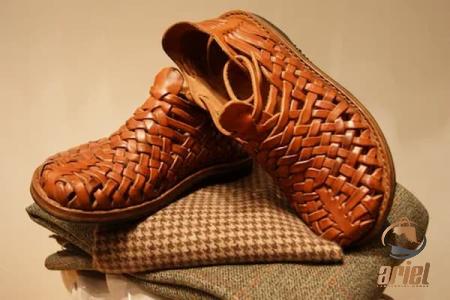
.
 This can be advantageous for climbers who prefer a more dynamic and agile climbing style. When it comes to choosing between leather and synthetic climbing shoes, the decision ultimately comes down to personal preference and specific climbing needs. If you prioritize durability, long-term comfort, and precision, leather shoes may be the better option for you. On the other hand, if you value quick break-in time, breathability, and sensitivity, synthetic shoes could be the ideal choice. It’s worth noting that some climbers opt to have both leather and synthetic climbing shoes in their gear arsenal to cater to different climbing scenarios. Having a pair of leather shoes for challenging technical routes and a pair of synthetic shoes for steep and dynamic climbs can provide you with the versatility you need to tackle a variety of climbing challenges. In conclusion, the choice between leather and synthetic climbing shoes ultimately comes down to your personal preferences, climbing style, and priorities. Both types of shoes offer unique advantages and can enhance your climbing experience in different ways. By understanding the characteristics of each type of shoe and considering how they align with your climbing goals, you can make an informed decision that will help you climb with confidence and comfort. Whether you’re a beginner climber looking to invest in your first pair of climbing shoes or a seasoned pro in search of a new addition to your gear collection, the debate between leather and synthetic climbing shoes continues to be a hot topic in the climbing community. Each type of shoe has its own set of advantages and disadvantages, and understanding these differences can help you make a decision that will enhance your climbing performance and overall experience on the rock. For climbers who prioritize comfort and long-term durability, leather climbing shoes are often the go-to choice.
This can be advantageous for climbers who prefer a more dynamic and agile climbing style. When it comes to choosing between leather and synthetic climbing shoes, the decision ultimately comes down to personal preference and specific climbing needs. If you prioritize durability, long-term comfort, and precision, leather shoes may be the better option for you. On the other hand, if you value quick break-in time, breathability, and sensitivity, synthetic shoes could be the ideal choice. It’s worth noting that some climbers opt to have both leather and synthetic climbing shoes in their gear arsenal to cater to different climbing scenarios. Having a pair of leather shoes for challenging technical routes and a pair of synthetic shoes for steep and dynamic climbs can provide you with the versatility you need to tackle a variety of climbing challenges. In conclusion, the choice between leather and synthetic climbing shoes ultimately comes down to your personal preferences, climbing style, and priorities. Both types of shoes offer unique advantages and can enhance your climbing experience in different ways. By understanding the characteristics of each type of shoe and considering how they align with your climbing goals, you can make an informed decision that will help you climb with confidence and comfort. Whether you’re a beginner climber looking to invest in your first pair of climbing shoes or a seasoned pro in search of a new addition to your gear collection, the debate between leather and synthetic climbing shoes continues to be a hot topic in the climbing community. Each type of shoe has its own set of advantages and disadvantages, and understanding these differences can help you make a decision that will enhance your climbing performance and overall experience on the rock. For climbers who prioritize comfort and long-term durability, leather climbing shoes are often the go-to choice.
..
 The natural material used in leather shoes has the unique ability to conform to the shape of your foot over time, providing a personalized fit that maximizes comfort and performance. This personalized fit not only improves overall comfort but also enhances sensitivity and control while climbing, allowing you to confidently tackle challenging routes with precision. In addition to the superior fit and comfort, leather climbing shoes are known for their exceptional durability. The rugged nature of high-quality leather makes these shoes highly resistant to wear and tear, making them a smart investment for climbers who are looking for a long-lasting and reliable footwear option. The durability of leather shoes also translates to enhanced protection for your feet, shielding them from abrasions, sharp rocks, and other hazards commonly encountered during climbing activities. On the other hand, synthetic climbing shoes offer a different set of advantages that cater to climbers who value lightweight construction, breathability, and quick performance. Synthetic materials, such as nylon and polyester, are commonly used in the construction of these shoes, providing a more consistent fit right out of the box. This means that synthetic shoes often require minimal break-in time, allowing you to hit the rocks with comfort and confidence from the get-go. One of the key benefits of synthetic climbing shoes is their breathability. The lightweight and breathable materials used in synthetic shoes help to wick away moisture and promote airflow, keeping your feet cool and dry even during intense climbing sessions. This enhanced breathability can be particularly beneficial for climbers who tend to sweat heavily or engage in climbing activities in warm and humid conditions, ensuring that your feet remain comfortable and free from moisture-related issues. In terms of performance, both leather and synthetic climbing shoes have their own unique strengths that cater to different climbing styles and preferences.
The natural material used in leather shoes has the unique ability to conform to the shape of your foot over time, providing a personalized fit that maximizes comfort and performance. This personalized fit not only improves overall comfort but also enhances sensitivity and control while climbing, allowing you to confidently tackle challenging routes with precision. In addition to the superior fit and comfort, leather climbing shoes are known for their exceptional durability. The rugged nature of high-quality leather makes these shoes highly resistant to wear and tear, making them a smart investment for climbers who are looking for a long-lasting and reliable footwear option. The durability of leather shoes also translates to enhanced protection for your feet, shielding them from abrasions, sharp rocks, and other hazards commonly encountered during climbing activities. On the other hand, synthetic climbing shoes offer a different set of advantages that cater to climbers who value lightweight construction, breathability, and quick performance. Synthetic materials, such as nylon and polyester, are commonly used in the construction of these shoes, providing a more consistent fit right out of the box. This means that synthetic shoes often require minimal break-in time, allowing you to hit the rocks with comfort and confidence from the get-go. One of the key benefits of synthetic climbing shoes is their breathability. The lightweight and breathable materials used in synthetic shoes help to wick away moisture and promote airflow, keeping your feet cool and dry even during intense climbing sessions. This enhanced breathability can be particularly beneficial for climbers who tend to sweat heavily or engage in climbing activities in warm and humid conditions, ensuring that your feet remain comfortable and free from moisture-related issues. In terms of performance, both leather and synthetic climbing shoes have their own unique strengths that cater to different climbing styles and preferences.
…
 Leather shoes are renowned for their precision and edging capabilities, making them an excellent choice for climbers who focus on technical climbing routes that demand precise footwork and control. The ability of leather shoes to mold to the shape of your foot over time contributes to improved sensitivity and responsiveness on the rock, allowing you to feel and grip onto even the smallest of holds with confidence. On the other hand, synthetic climbing shoes are prized for their sensitivity and flexibility. The lightweight construction and thinner materials used in synthetic shoes provide enhanced sensitivity, allowing you to feel the texture of the rock beneath your feet and make more precise foot placements. This increased sensitivity can be a game-changer, especially when tackling challenging climbs that require delicate footwork and a high level of control. When it comes to choosing between leather and synthetic climbing shoes, it’s essential to take into account your personal preferences, climbing goals, and the specific demands of the routes you’ll be tackling. For climbers who prioritize durability, personalized fit, and long-term comfort, leather shoes may be the ideal choice. Conversely, climbers who value quick break-in time, breathability, and enhanced sensitivity may find that synthetic shoes better align with their needs and preferences. Ultimately, the decision between leather and synthetic climbing shoes is a personal one that depends on a variety of factors, including your climbing style, preferences, and the types of climbs you typically engage in. Some climbers may find that having a diverse selection of both leather and synthetic shoes in their gear collection allows them to adapt to different climbing scenarios and challenges more effectively. Whether you opt for the personalized fit and durability of leather shoes or the lightweight construction and breathability of synthetic shoes, choosing the right climbing footwear can significantly impact your climbing experience and performance on the rock. In conclusion, the debate between leather and synthetic climbing shoes is ongoing, with both types of shoes offering unique advantages and benefits for climbers of all levels. By considering the characteristics, performance attributes, and comfort features of each type of shoe, you can make an informed decision that suits your individual needs and enhances your climbing experience. Whether you prefer the personalized fit and durability of leather shoes or the quick performance and breathability of synthetic shoes, investing in high-quality climbing footwear that aligns with your preferences can help you climb with confidence, comfort, and style.
Leather shoes are renowned for their precision and edging capabilities, making them an excellent choice for climbers who focus on technical climbing routes that demand precise footwork and control. The ability of leather shoes to mold to the shape of your foot over time contributes to improved sensitivity and responsiveness on the rock, allowing you to feel and grip onto even the smallest of holds with confidence. On the other hand, synthetic climbing shoes are prized for their sensitivity and flexibility. The lightweight construction and thinner materials used in synthetic shoes provide enhanced sensitivity, allowing you to feel the texture of the rock beneath your feet and make more precise foot placements. This increased sensitivity can be a game-changer, especially when tackling challenging climbs that require delicate footwork and a high level of control. When it comes to choosing between leather and synthetic climbing shoes, it’s essential to take into account your personal preferences, climbing goals, and the specific demands of the routes you’ll be tackling. For climbers who prioritize durability, personalized fit, and long-term comfort, leather shoes may be the ideal choice. Conversely, climbers who value quick break-in time, breathability, and enhanced sensitivity may find that synthetic shoes better align with their needs and preferences. Ultimately, the decision between leather and synthetic climbing shoes is a personal one that depends on a variety of factors, including your climbing style, preferences, and the types of climbs you typically engage in. Some climbers may find that having a diverse selection of both leather and synthetic shoes in their gear collection allows them to adapt to different climbing scenarios and challenges more effectively. Whether you opt for the personalized fit and durability of leather shoes or the lightweight construction and breathability of synthetic shoes, choosing the right climbing footwear can significantly impact your climbing experience and performance on the rock. In conclusion, the debate between leather and synthetic climbing shoes is ongoing, with both types of shoes offering unique advantages and benefits for climbers of all levels. By considering the characteristics, performance attributes, and comfort features of each type of shoe, you can make an informed decision that suits your individual needs and enhances your climbing experience. Whether you prefer the personalized fit and durability of leather shoes or the quick performance and breathability of synthetic shoes, investing in high-quality climbing footwear that aligns with your preferences can help you climb with confidence, comfort, and style.
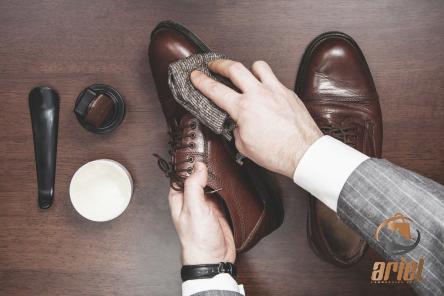



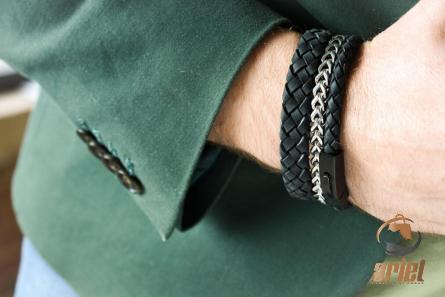
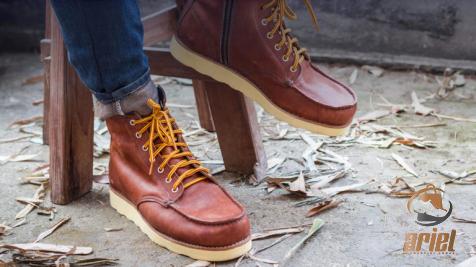


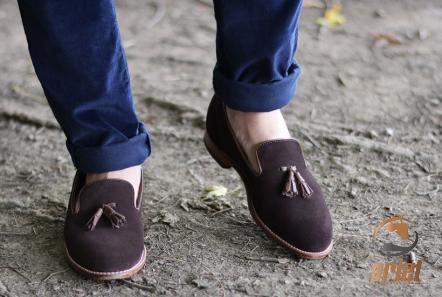
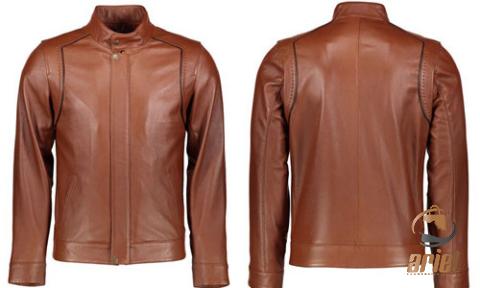
Your comment submitted.